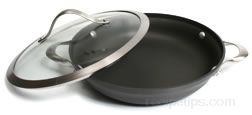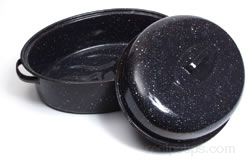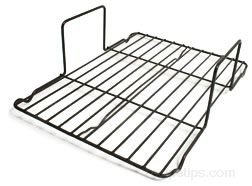KITCHEN PANS - Paella Pan to Sauce Pan
PAELLA PAN
 Paella is a Valencian rice dish that originated in its modern form in the mid-19th
century near lake Albufera, a lagoon in Valencia, on the east coast of Spain.Many
non-Spaniards view paella as Spain's national dish, but most Spaniards consider
it to be a regional Valencian dish. Valencians, in turn, regard paella as one of
their identifying symbols. There are three widely known types of paella: Valencian
paella (Spanish: paella valenciana), seafood paella (Spanish: paella de marisco)
and mixed paella (Spanish: paella mixta), but there are many others as well. Valencian
paella consists of white rice, green vegetables, meat (rabbit, chicken, duck), land
snails, beans and seasoning. Seafood paella replaces meat and snails with seafood
and omits beans and green vegetables. Mixed paella is a free-style combination of
meat, seafood, vegetables, and sometimes beans. Most paella chefs use calasparra
or bomba rices for this dish. Other key ingredients include saffron and olive oil.
Paella usually has a layer of toasted rice at the bottom of the pan called socarrat
in Spain. This is considered a delicacy there and is essential to a good paella.
The toasted rice develops on its own if the paella is cooked over a burner or open
fire. If cooked in an oven, however, it will not. To correct this, place the paellera
over a high flame while listening to the rice toast at the bottom of the pan. Once
the aroma of toasted rice wafts upwards, remove it from the heat. The paella must
then sit for about five minutes (most recipes recommend the paella be covered with
a towel at this point) to absorb the remaining broth.
Paella is a Valencian rice dish that originated in its modern form in the mid-19th
century near lake Albufera, a lagoon in Valencia, on the east coast of Spain.Many
non-Spaniards view paella as Spain's national dish, but most Spaniards consider
it to be a regional Valencian dish. Valencians, in turn, regard paella as one of
their identifying symbols. There are three widely known types of paella: Valencian
paella (Spanish: paella valenciana), seafood paella (Spanish: paella de marisco)
and mixed paella (Spanish: paella mixta), but there are many others as well. Valencian
paella consists of white rice, green vegetables, meat (rabbit, chicken, duck), land
snails, beans and seasoning. Seafood paella replaces meat and snails with seafood
and omits beans and green vegetables. Mixed paella is a free-style combination of
meat, seafood, vegetables, and sometimes beans. Most paella chefs use calasparra
or bomba rices for this dish. Other key ingredients include saffron and olive oil.
Paella usually has a layer of toasted rice at the bottom of the pan called socarrat
in Spain. This is considered a delicacy there and is essential to a good paella.
The toasted rice develops on its own if the paella is cooked over a burner or open
fire. If cooked in an oven, however, it will not. To correct this, place the paellera
over a high flame while listening to the rice toast at the bottom of the pan. Once
the aroma of toasted rice wafts upwards, remove it from the heat. The paella must
then sit for about five minutes (most recipes recommend the paella be covered with
a towel at this point) to absorb the remaining broth.
ROASTING PAN
 A roasting pan is a pan that is designed to withstand high oven temperatures for
a long-time. It also better be pretty big and strong to hold turkeys, chickens,
hams, or roasts with lots of vegetables. Often the roasting or roaster pan will
come with a cover and/or a roasting rack. The first decision you have to make when
choosing a roaster pan is whether it will be disposable or not. Many people opt
not to store the large pan when they aren't using it. If they are preparing a turkey
for a church supper or family dinner they prefer to take a disposable roaster pan.
They have the advantage of not cleaning it and lugging it home. Disposable roasting
pans come in handy when you've only got one roasting pan and you're cooking a turkey
and aham for the family reunion. It cuts down on anyone forgetting to bring an extra
roasting pan for you to use.
A roasting pan is a pan that is designed to withstand high oven temperatures for
a long-time. It also better be pretty big and strong to hold turkeys, chickens,
hams, or roasts with lots of vegetables. Often the roasting or roaster pan will
come with a cover and/or a roasting rack. The first decision you have to make when
choosing a roaster pan is whether it will be disposable or not. Many people opt
not to store the large pan when they aren't using it. If they are preparing a turkey
for a church supper or family dinner they prefer to take a disposable roaster pan.
They have the advantage of not cleaning it and lugging it home. Disposable roasting
pans come in handy when you've only got one roasting pan and you're cooking a turkey
and aham for the family reunion. It cuts down on anyone forgetting to bring an extra
roasting pan for you to use.
ROASTING RACK
 A formed metal rack that is placed in the bottom of a roasting pan in order to keep
foods raised above the bottom of the pan. The rack allows excess fat to drain from
the food (especially meat) and it helps prevent the bottom of the food from burning
or scorching. It also allows the food to cook evenly on all sides. Specially formed
racks, such as the poultry racks and the v-shaped meat racks can also be used on
the grill for the same intended purpose as when used in the oven. They will help
the meat hold its shape and allow it to cook more evenly. Roasting racks are formed
into different shapes and sizes to hold various types of meats, poultry, fish, and
other foods. As an example, different shaped or sized roasting racks are made for
ribs, roasts, chicken, game hens, vegetables, and various other foods.
A formed metal rack that is placed in the bottom of a roasting pan in order to keep
foods raised above the bottom of the pan. The rack allows excess fat to drain from
the food (especially meat) and it helps prevent the bottom of the food from burning
or scorching. It also allows the food to cook evenly on all sides. Specially formed
racks, such as the poultry racks and the v-shaped meat racks can also be used on
the grill for the same intended purpose as when used in the oven. They will help
the meat hold its shape and allow it to cook more evenly. Roasting racks are formed
into different shapes and sizes to hold various types of meats, poultry, fish, and
other foods. As an example, different shaped or sized roasting racks are made for
ribs, roasts, chicken, game hens, vegetables, and various other foods.
SAUCE PAN
 A saucepan is a cooking vessel generally used on top of a range for heating food
and / or reducing sauces. Saucepans can be made of a variety of materials, like
aluminium and stainless steel, and the cooking surface can have a non-stick coating,
like Teflon. As with all pans the heavier the gauge of the metal the better (especially
at the base); it enables more even heat distribution, which makes sticking and burning
less likely. Some saucepans have a thick sheet of thermally conductive aluminium
laminated into their base for that purpose . A coating of copper on the base allegedly
has the same effect, but it would need to be reasonably thick to have any real benefit.
High-sided sauce pans are most useful for heating foods with high liquid content.
Low-sided and flare-sided (called Windsor pans) saucepans are most effective for
reducing sauces and other liquids.
A saucepan is a cooking vessel generally used on top of a range for heating food
and / or reducing sauces. Saucepans can be made of a variety of materials, like
aluminium and stainless steel, and the cooking surface can have a non-stick coating,
like Teflon. As with all pans the heavier the gauge of the metal the better (especially
at the base); it enables more even heat distribution, which makes sticking and burning
less likely. Some saucepans have a thick sheet of thermally conductive aluminium
laminated into their base for that purpose . A coating of copper on the base allegedly
has the same effect, but it would need to be reasonably thick to have any real benefit.
High-sided sauce pans are most useful for heating foods with high liquid content.
Low-sided and flare-sided (called Windsor pans) saucepans are most effective for
reducing sauces and other liquids.
Au Gratin Pan, Broiler Pan, Casserole Pan, Chestnut Pan |
Copper Bottom, Double-Broiler, Dutch Oven |
Fondue Pot, Fry Pan, Grill Basket
Grill Pan, Loaf Pan, Lo-Fat Loaf Pan, Omelet Pan
Paella Pan, Roasting Pan, Roasting Rack, Sauce Pan |
Saucier Pan, Sauté Pan, Sauteuse Pan, Stir-Fry Pan |
Stock Pot, Wok